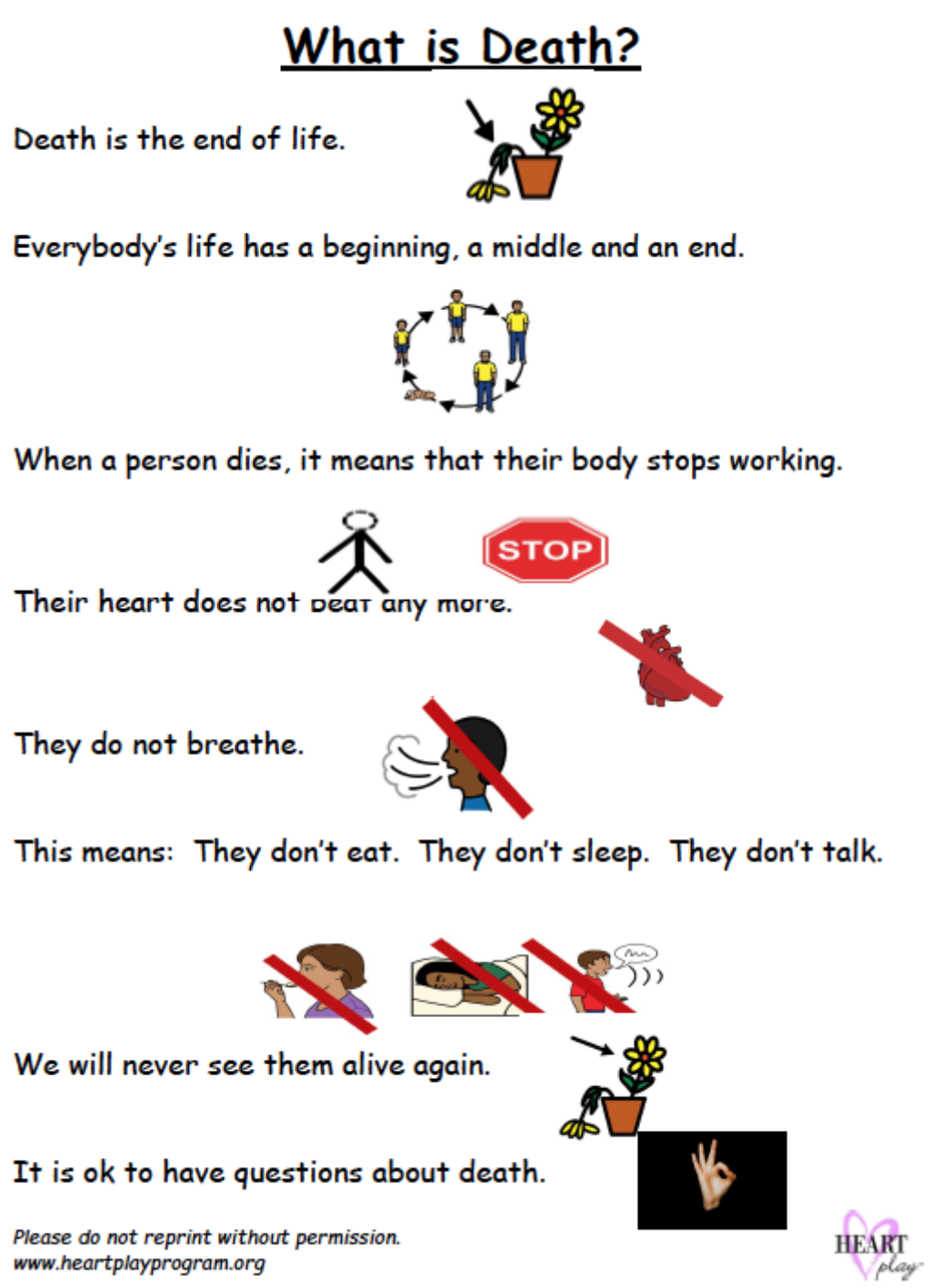Supporting Grieving People of All Abilities
Every grief is unique and effective grief support will look different based on the needs of the individual. This is especially true when it comes to supporting people with neurodivergent conditions like Autism Spectrum Disorder, ADHD, sensory processing disorders, and Down syndrome, among others. Below are a few resources that can help you offer meaningful support.
NACG Toolkit: Supporting Children of All Abilities Who Are Grieving
Bereavement and Autism: A Universal Experience with Unique Challenges
Supporting Individuals on the Autism Spectrum Coping with Grief and Loss through Death or Divorce
Autistic Grief is not Like Neurotypical Grief
Pathfinders for Autism: Death and Grieving Tips
Autism Alliance: Grief and Loss Resources
Social Stories
Social stories can be a helpful tool for helping children of all abilities understand death, loss, and grief. HEARTplay provided some examples of what a death/grief-related social story might look like.

Source: heartplayprogram.org